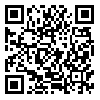
International Journal of Industrial Engineering & Production Research
Iran University of Science & Technology
BibTeX | RIS | EndNote | Medlars | ProCite | Reference Manager | RefWorks
Send citation to:
URL: http://ijiepr.iust.ac.ir/article-1-270-en.html
2- Material Planning Expert, Material Planning Department, SAPCO Company
3- PhD student of Industrial Eng-Iran University of Science and Technology
The importance of reliable supply is increasing with supply chain network extension and just-in-time (JIT) production. Just in time implications motivate manufacturers towards single sourcing, which often involves problems with unreliable suppliers. If a single and reliable vendor is not available, manufacturer can split the order among the vendors in order to simultaneously decrease the supply chain uncertainty and increase supply reliability. In this paper we discuss with the aim of minimizing the shortage cost how we can split orders among suppliers with different lead times. The (s,S) policy is the basis of our inventory control system and for analyzing the system performance we use the fuzzy queuing methodology. After applying the model for the case study (SAPCO), the result of the developed model will be compared in the single and multiple cases and finally we will find that order splitting in optimized condition will conclude in the least supply risk and minimized shortage cost in comparison to other cases .
Received: 2011/06/26 | Published: 2011/03/15
| Rights and permissions | |
 | This work is licensed under a Creative Commons Attribution-NonCommercial 4.0 International License. |



